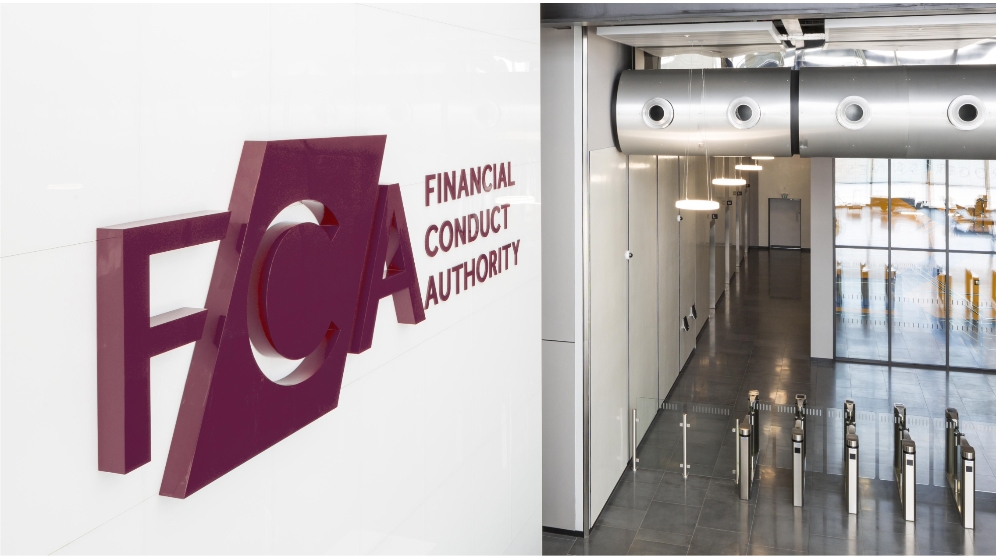Everyone involved in the management of claims will be aware of the Consumer Duty regulations that came into effect on 31stJuly 2023 and how they impact your claims functions. This blog article is intended to help claims leaders “kick the tyres” of their actions and attempts to illustrate some of the issues that may arise.
The intention of the new Duty is to set a higher standard in consumer protection across all financial institutions, including insurance, so it’s vitally important that insurers are able to demonstrate adherence to the regulations. It’s much more than simply a tick-box exercise; it requires real change.
We will do a short refresher of the purpose and nature of the regulations, their implications for claims functions, illustrate potential failure points and review actions that have proven efficacy in this area.
Basic principles of Consumer Duty
Consumer Duty sets high expectations for the standard of care firms give to consumers in retail financial markets. It came into full effect on 31st July 2023.
The Duty has introduced a new Consumer Principle (Principle 12). Its purpose is to elevate the existing Treating Customers Fairly (TCF) framework by requiring firms to act to deliver good outcomes for their retail customers ensuring existing best practice is applied consistently across the industry.
A firm’s existing processes should be delivering on the majority of what the Consumer Duty aims to achieve, but there are likely to be additional steps that need to be taken, and your approach to claims handling will impact on how you deliver those aims.
The implementation process will focus, among other things, on:
- identifying the key controls the financial business has in place
- who manages these controls
- where they are reported
- evidencing how they are monitored
- identifying any gaps in process or controls
- agreeing the actions required to resolve.
Consumer duty key outcomes – the impact on claims
The Consumer Duty outlines four key outcomes which provide a framework with practical guidance. These set out, in some detail, the regulator’s expectations of a firm’s behaviour in relation to:
- Consumer understanding
- Products and services
- Customer support
- Price and value
The areas in which claims will most often interact or influence the customers understanding and outcomes are:
- Consumer Understanding – should ensure that we communicate with clients in a way that equips them to make effective, timely and informed decisions.
- Consumer Support – we should enable customers to act on those decisions without facing unreasonable barriers, whether that’s face-to-face, on the phone or online.
How and why this could affect claims handling
Consumer Duty covers every aspect of the customer claims journey, and it covers everyone who forms part of that journey. Consumer Understanding and Customer Support are the foundation of what we and everyone in the claims supply chain does.
Customer Service covers a range of different areas – from how our teams interact with customers on the telephone, on-line or in person, to how we deal with complaints or conflict. But one area which is often overlooked yet is important to our ability to meet the expectations of Consumer Duty is that of suppliers. But it’s not restricted to an internal focus. Consumer Duty impacts externally too – any suppliers that manage any aspect of the customer journey are expected to adhere to these new regulations. And whilst that can vary from product to product, insurers will use a wide variety of suppliers, whether it be FNOL services, repair shops, TPAs or loss adjusters.
Consumer Duty – involves everyone, including suppliers
The key understanding of Consumer Duty is that everyone has a responsibility in the process, including the suppliers, and they too need to have an awareness of Consumer Duty even if they are not regulated or required to adhere to it directly. Their behaviours and performance can impact or influence your ability to deliver the outcomes, so it is critical that they are aware of where they fit into the process.
In future, it will not be sufficient to adopt an approach of ‘well, they’re not regulated’ or ‘they’re just a supplier’. There will be an expectation by the regulator that your processes acknowledge the role they play.
Customer Understanding – communicating the what and the why
If we look at Consumer Understanding, the FCA make it clear that ‘the right customer outcome’ does not mean that ‘the customer is always right’ or that the customer should receive a better settlement than the policy normally affords. What the Duty is looking to achieve is that the customer understands why the outcome has been reached and how their insurer got to that position. Fundamentally it’s about clear communication and transparency.
This means that it is important that claims teams are aware of how they communicate with customers and by what means. Claims teams must ask themselves if they are certain that they understand their customers and their needs or vulnerabilities and is the claims team using the best methods of communication and language to ask questions and give answers.
Whether you are a broker, insurer, TPA or other provider, if you communicate directly with customers then the Consumer Duty really does require you to look at how customers are managed and – just as importantly – that the outcomes of those customers processes can be demonstrated (ideally through data).
Illustrations of potential issues
All of the following examples are real life and have been seen over recent months through audits, performance reviews or complaint monitoring.
- Unanswered calls – this is particularly pertinent for those who work in a high-volume claims organisation. How do you deal with unanswered calls at the end of the day before they are switched over to the out of hours service? Do they get answered? Do you have to pick up each call and explain that the caller needs to try again in the morning, or do you allow the calls to just drop off?
Whatever your organisation’s solution is, the question must be asked – is it meeting the outcome set out by the new Consumer Duty?
- Poor supplier performance (loss adjusters, repairers, FNOL providers) – The performance of a supplier can have a negative impact on the overall handling of a claim. Often, it’s not the supplier’s fault, it may be circumstance or a situation beyond their control. Equally it could be an actual failure, poor process or organisation. It may be the result of a lack of communication or clear instruction, or it could just be that the supplier is not doing their job properly.
These things can happen, but what you do to prevent them from happening and how you deal with it after it has happened, all contribute to demonstrating how you are meeting the outcomes set by the regulator. The actions of suppliers, the SLAs or contracts with them and the ability to monitor all of this, are under the spotlight.
- Vulnerable customers – many claimants, especially personal lines customers, may have some vulnerability which might require the insurer to make adaptations. A claim is unlikely to be a familiar process to most customers but it’s potentially even more complex for those who might be vulnerable in any way.
- Supply chain issues –The supply chain can present a variety of challenges in its management of customers and whilst some of these will be difficult to overcome, the Consumer Duty places an expectation on all parts of the supply chain to recognise the challenges and communicate effectively to show they’re managing the process.
Hopefully, these situations are the exception rather than the norm and most organisations have great training and monitoring processes in place. But consistent failures will have the potential to hit the regulators desk a lot more quickly now.
This is a good time for claims managers to test their assumptions about their processes – that it’s a clear process, that it is the right process and that it works.
Some Actions to Consider:
Reviewing contracts and SLA’s – it’s important to take a step back and review your contracts and SLAs to ensure that they are fit for purpose, that they have not crept organically into a place where they cannot realistically deliver and to make sure that they are not a barrier to you delivering on the required outcomes.
Helping partners understand the part they play in meeting the duty – linked to what we’ve just said about contracts and SLAs but just as important because Consumer Duty puts an expectation on you to ensure that you are helping your partners and suppliers understand the duty, what it means and what part they play, even if they, themselves, are not regulated.
It’s about fostering positive behaviours across the entire delivery chain. If you, as an organisation and as an individual, are proactive about this, it will be a massive step to meeting the outcomes.
Straightforward explanations – know your audience and keep things simple. Don’t hide behind jargon and buzzwords. This will not be seen as meeting the Consumer Understanding outcome!
Ensuring that outcomes can be evidenced – there is an old saying ‘If it’s not written down, it didn’t happen’. The same applies for Consumer Duty. It’s critical that you can evidence your processes, or decisions and outcomes with data. In high pressure or high volume environments or in partner and supplier organisations which don’t operate in the way you do, things don’t always get written down.
Remember – the actions or inactions of your internal Claims team and external suppliers will impact on your ability to evidence that you’ve achieved the outcome.
Outcomes are reviewed and monitored on an ongoing basis – don’t assume the process is right and that that it works. Processes and relationships with customers and suppliers, evolve, creep, and develop. Take time to step back and review them, do they work? Are they still fit for purpose? Are you keeping track on how things are progressing?
Any issues identified are remedied or mitigated – If you find a problem or you make a mistake – spot it and fix it. Achieving perfection 100% of the time is nearly impossible, mistakes will happen but if you can show that you are able to identify, remedy or mitigate the issue then the regulator will acknowledge this.
Conclusion
Ultimately then, it is incumbent on you to ensure the regulations are met and that all the constituent parts of the claims journey work towards that goal. Companies are accountable to the regulator for what they have done but, just as importantly, they are accountable to their customer. The regulator will be responsive to the individual consumer, and we know how easy it is for companies to feel they are acting appropriately but still fall foul of the regulator. Establishing the facts and being able to demonstrate verified processes are a claims leader’s sword and shield in this new world.
At SX3, we take an independent view of your current processes and delivery to provide an objective assessment. We can help you build and implement a structured programme of monitoring and review to help demonstrate your ongoing improvement and understanding of Consumer Duty.
James Tye
SX3 Associate






